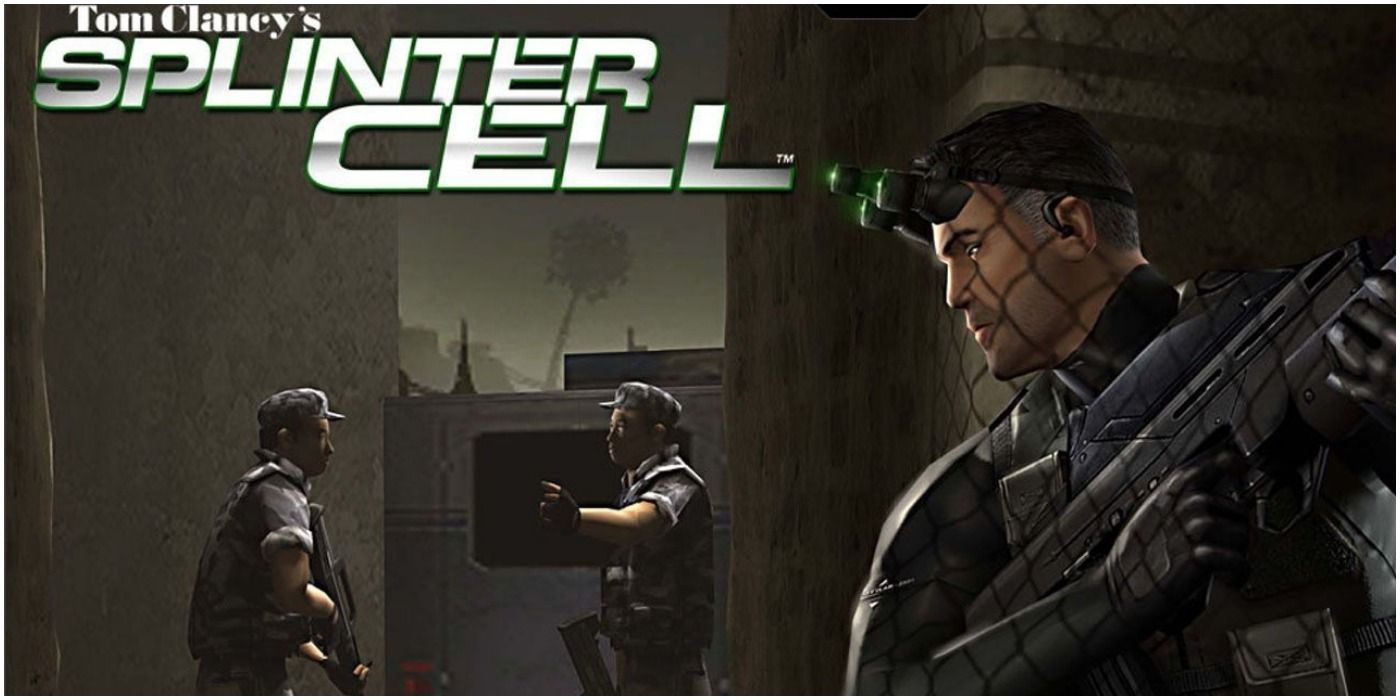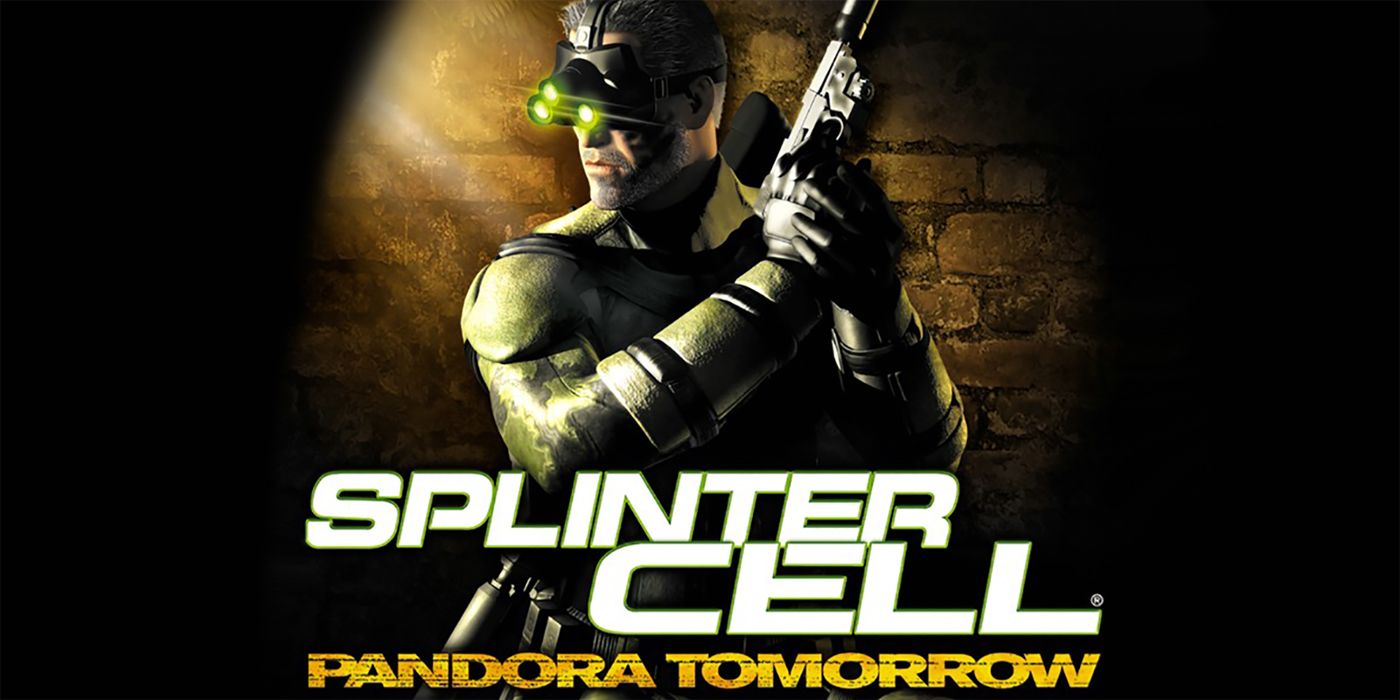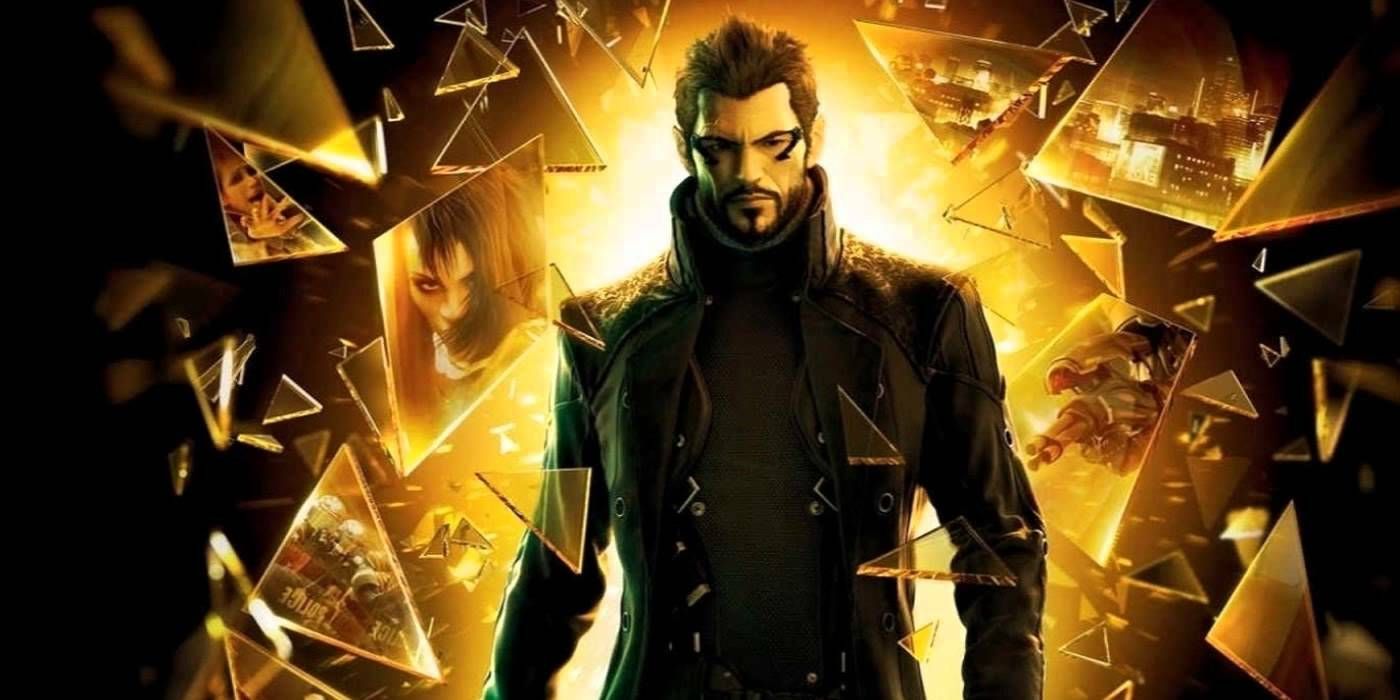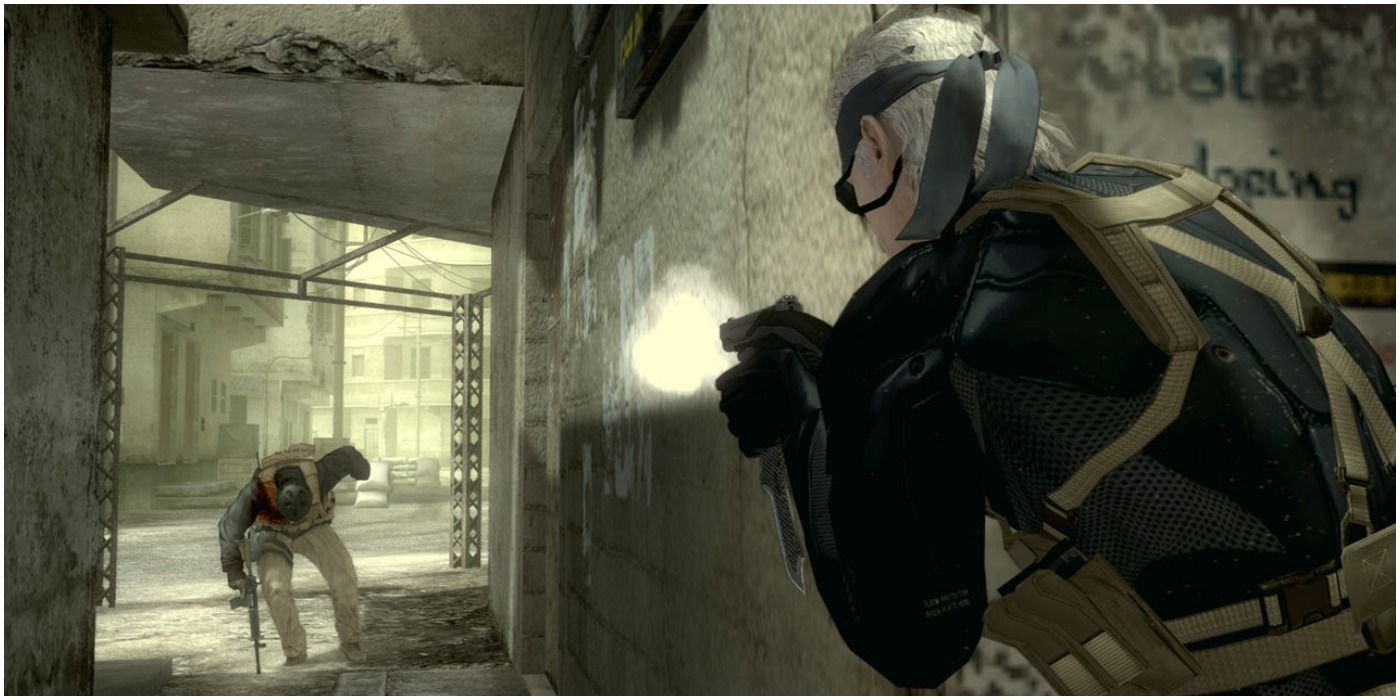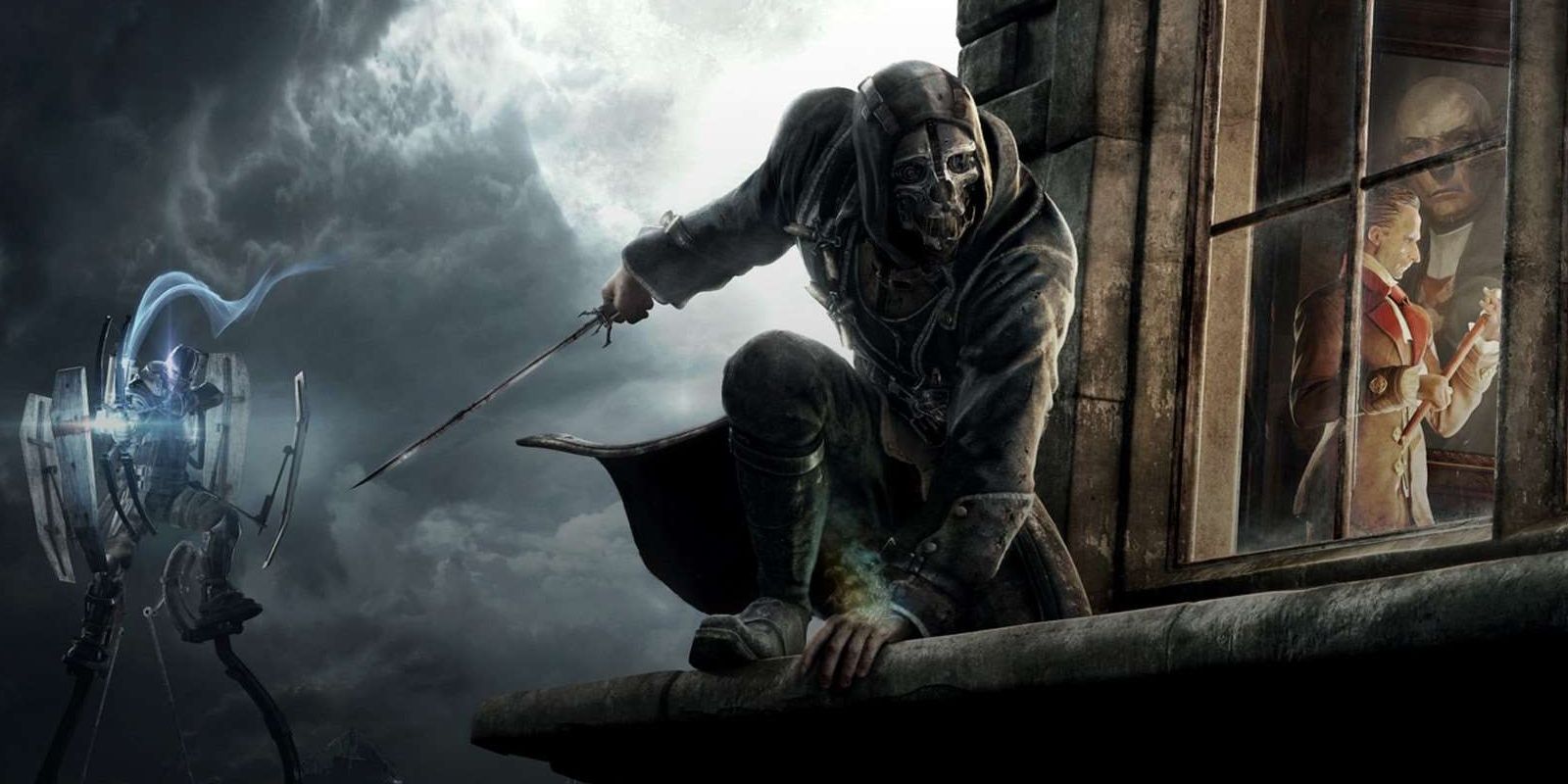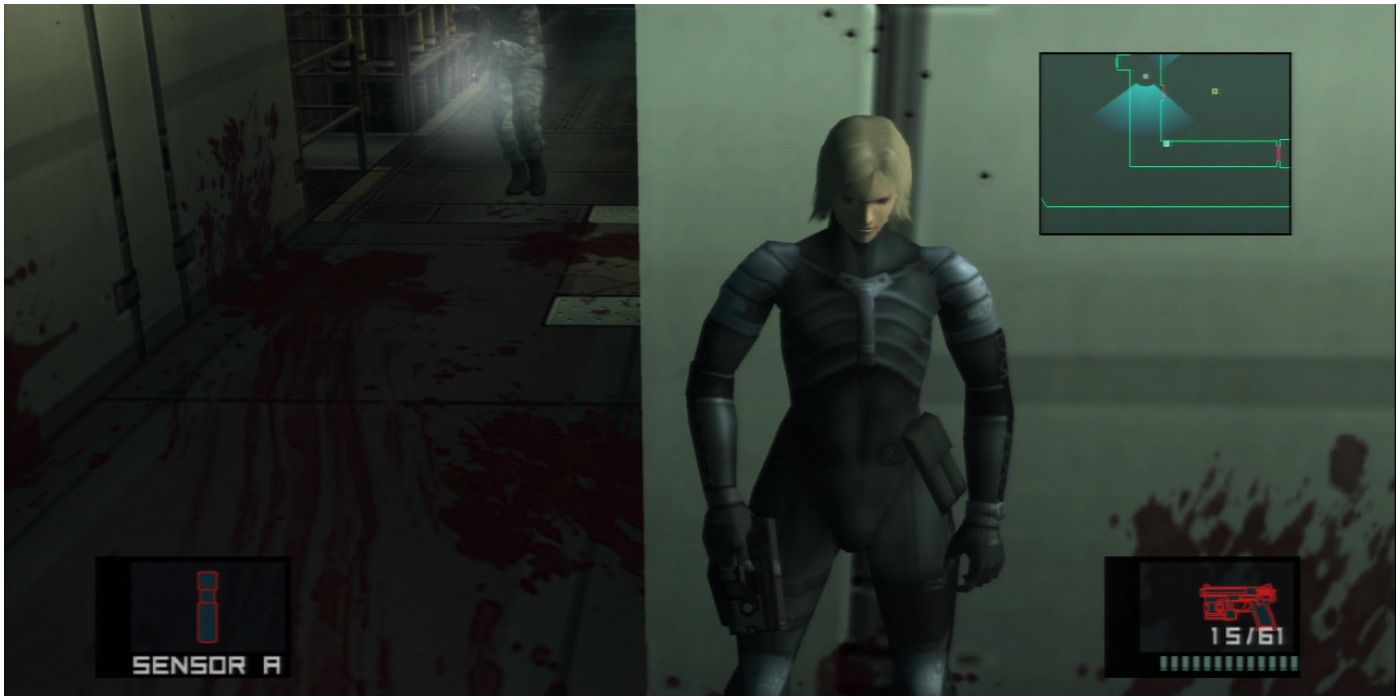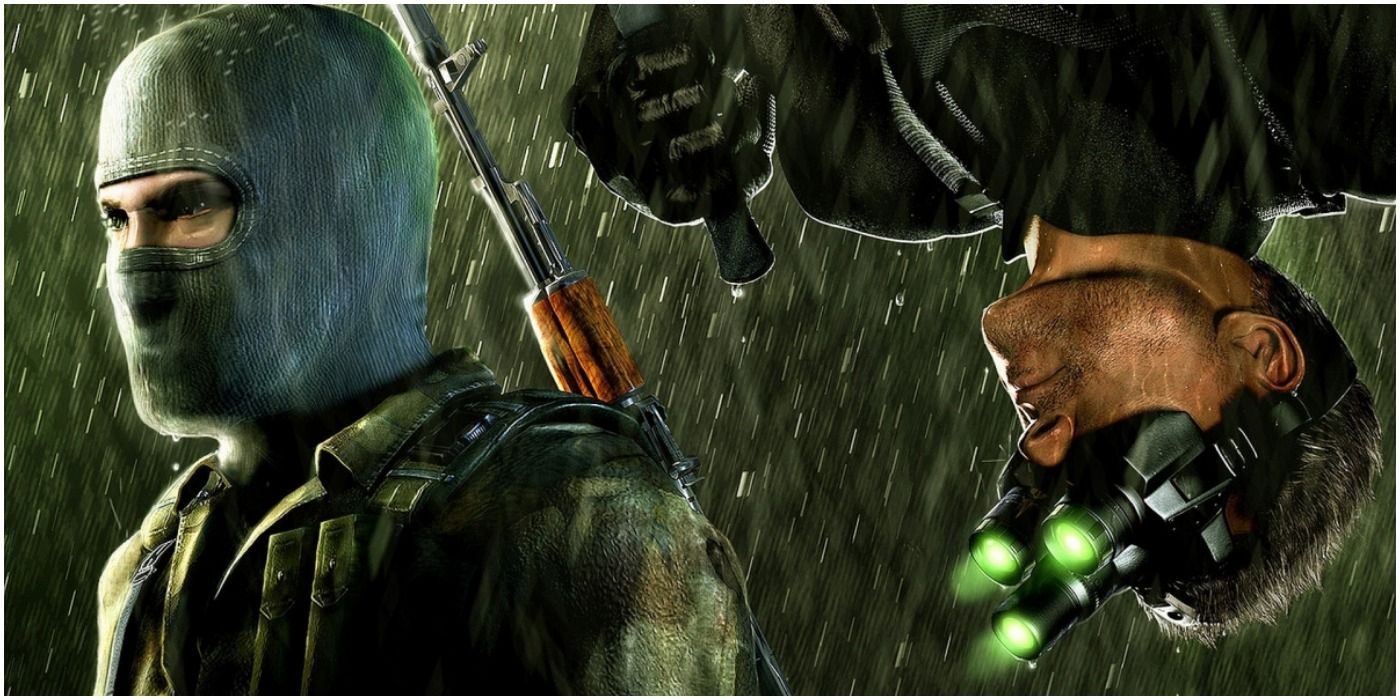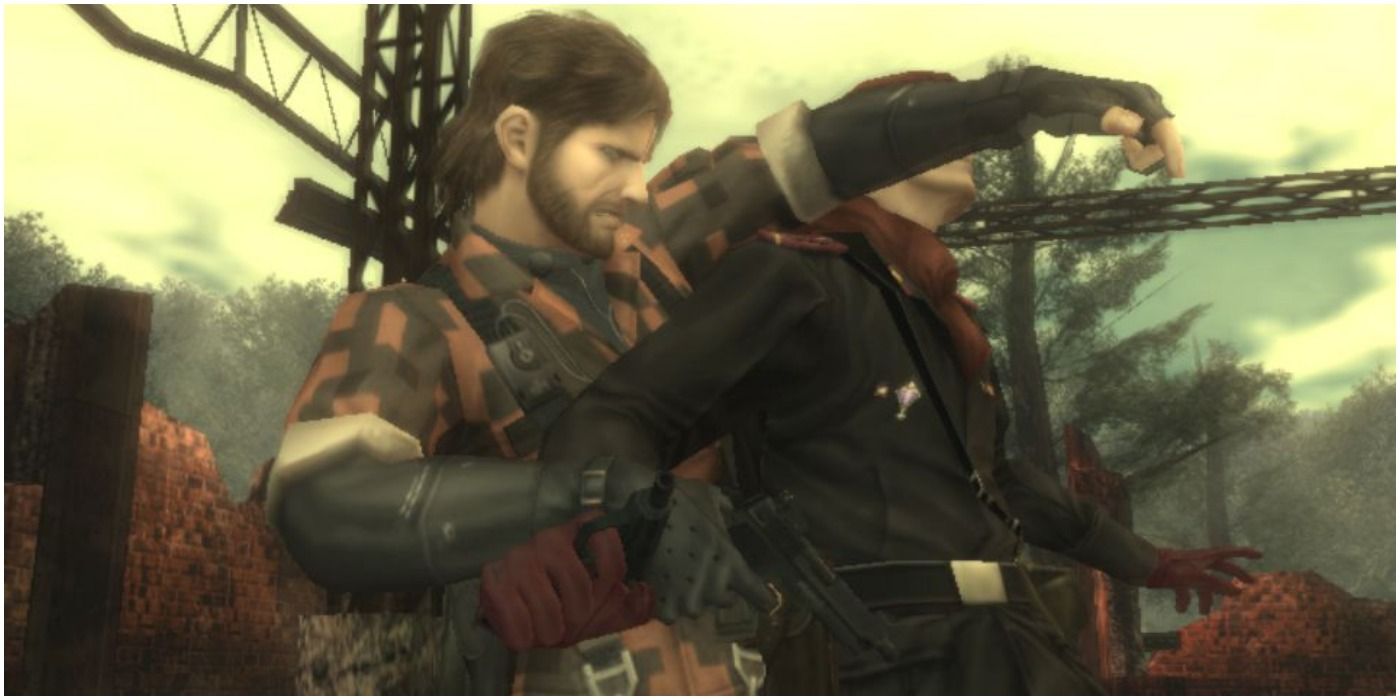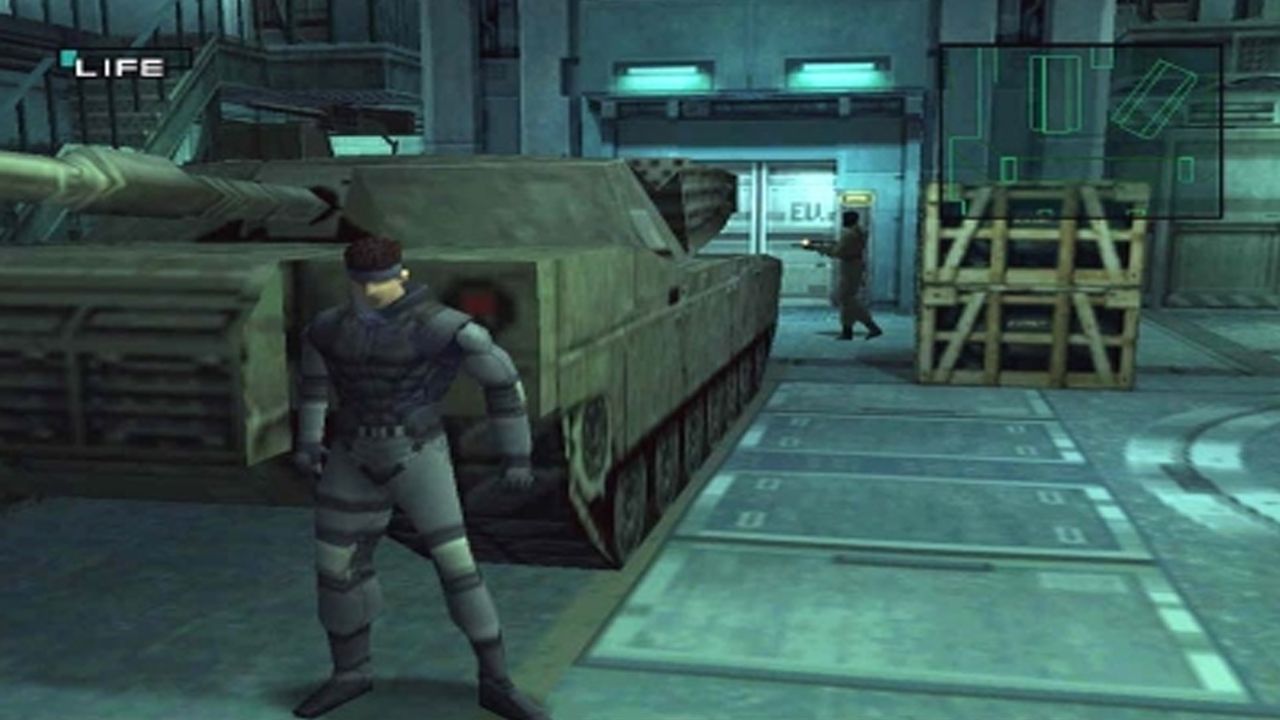Even though it was Metal Gear Solid that helped popularized the stealth genre in the late 1990s influencing the likes of Syphon Filter and Tenchu: Stealth Assassins, the stealth sub-genre had much earlier beginnings than that. In 1981, Castle Wolfenstein is often credited as being one of the first when it implemented stealth mechanics such as sneaking and wearing disguises. Then the mid-80s saw the release of Saboteur, Infiltrator, and the first two Metal Gear titles on the SNES.
The late 90s saw mega-hits like Goldeneye 007 on the N64 which favored stealth over running and gunning and of course the genre-defining Metal Gear Solid on the PS1. Their release left gamers craving more of the same and several other gaming studios followed suit. As a result, there have been many great games in which stealth was the main gaming mechanic in the twenty-plus years since MGS on the PS1, but how do modern titles hold up against the classics on Metacritic?
10 Tom Clancy’s Splinter Cell – Metacritic Score 89
Despite being on a hiatus since 2013’s Splinter Cell: The Blacklist, the series is still considered one of Ubisoft’s flagship series along with other titles under the Tom Clancy banner like Rainbow Six and Ghost Recon.
It was released as Ubisoft’s answer to the Metal Gear Solid series and offered gamers a more realistic and less anime-inspired approach to its narrative. The game put players in the shoes of an NSA operative Sam Fisher where detection from enemies could result in an instant game over.
9 Tom Clancy’s Splinter Cell: Pandora Tomorrow – Metacritic Score 89.5
Tom Clancy’s Splinter Cell: Pandora Tomorrow was a direct sequel to the 2002 original. Developed instead by Ubisoft’s Shanghai studio while their Montreal team worked on Splinter Cell: Chaos Theory, the game offered visual and mechanical improvements over its predecessor.
Pandora’s Tomorrow did receive some criticism for its linearity in the later stages of the game. It did, however, introduce what would later become staples in the franchise like whistling to attract enemies and the "SWAT turn" mechanic allowing Sam to pass doorways unnoticed.
8 Deus Ex: Human Revolution - Metacritic Score 90
Deus Ex: Human Revolution was released 2011 and was the third games in the Deus Ex series, though it was a prequel to the original released in 2000. The game’s stealth mechanics took inspiration from both the Metal Gear Solid series and The Chronicles of Riddick: Escape from Butcher Bay.
While the game offered the choice of going into dangerous scenarios all guns blazing, Human Revolution’s biggest strength was in its stealth or the ability to mix and match. Like the Metal Gear and Splinter Cell series, the environments offer players incredible freedom of choice for silent takedowns.
7 Metal Gear Solid 4: Guns Of Patriots – Metacritic Score 90.5
Released on the PlayStation 3 in 2008 Metal Gear Solid 4: Guns of Patriots places its players back in the shoes of Solid Snake. This time, however, Snake is going through an accelerated aging process due to the “Les Enfants Terribles” cloning project explained in previous titles.
Yet, despite being older, Snake’s stealth mechanics are sharper and better realized than in previous titles. His suit has the chameleon-like ability to digitally blend into his surroundings. The player is also tasked with keeping an eye on his psyche/stress gauge; if it’s too full, he will have, back pain, difficulty in aiming, and the risk of passing out.
6 Dishonored – Metacritic Score 91
The Dishonored series may be one of the purest stealth games ever created due to the sheer amount of choice given to the player. However, unlike most of its competition, Dishonored’s world is based in a Victorian steampunk setting of Dunwall where technology and magic coexist.
Like Deus Ex, the game offers the players a lot of choice in combat stealth and pathways. In addition, developers Arkane Studios brought their magic-wielding expertise from their role-playing title Arx Fatalis. The player is gifted with the ability to use teleportation, possession of enemies, bending time to their will, and more.
5 Metal Gear Solid 2: Sons Of Liberty Metacritic Score 91.5
Metal Gear Solis 2: Sons of Liberty was one of the PlayStation 2’s biggest releases and set a new standard for visuals and cutscenes at the time. It was something of a controversial release due to bait-and-switch offered by the game’s opening level and demo by making fans think they would be playing as Snake.
Instead, fans spent the majority of the game playing as the new character, but it also introduced a more agile and athletic protagonist in Raiden, who would later return in his game Metal Gear Rising. In addition, the stealth mechanics were better than ever and the series penchant for telling a crazy story satisfied fans of the series lore.
4 Thief: The Dark Project - Metacritic Score 92
Thief: The Dark Project was one of the most groundbreaking stealth titles ever released. Its influence can be seen in other games in the genre Tom Clancy’s Splinter Cell, Hitman, and, more recently, the Dishonored series.
Thief’s gameplay focused on non-confrontation and taking out enemies silently by implementing the use of hiding in the shadows, silent takedowns, and strategy, all of which would become staples of the genre. The series received a more modern reboot in 2014 with the aptly titled Thief, which wasn't as well-received as the originals.
3 Tom Clancy’s Splinter Cell: Chaos Theory - Metacritic Score 93
Tom Clancy’s Splinter Cell: Chaos Theory was the third title in the series and is still regarded among fans of the series as the best in the franchise and one of the best stealth games ever developed.
The game added more stealth options than ever before with the addition of lethal and non-lethal hanging takedowns, Sam moved more fluidly through the environment, and the game felt more open than previous titles. At the time, Chaos Theory was one of the most visually impressive games on console, and it still features the best narrative in the series.
2 Metal Gear Solid 3: Subsistence Metacritic Score 93.5
Metal Gear Solid 3: Subsistence was released on the PlayStation 2 in 2006 and is an enhanced version of 2004’s Metal Gear Solid 3: Snake Eater. Instead of Solid Snake, the game places players in the shoes of Big Boss, also known as Naked Snake, during the 1960s.
The setting was a huge step forward in the series, and, instead of the industrial maze-like enemy bases, Snake would be traversing a Soviet-controlled rainforest. The storytelling is Hideo Kojima at his best, the close-quarters combat was a big improvement and the game’s stealth mechanics were incredible. Snake is able to use the jungle to his advantage by climbing trees, hiding in the grass, as well as using camouflage to blend in with the environment.
1 Metal Gear Solid - Metacritic Score 94
The original PlayStation was home to some of the most innovative and influential games ever released. Two of the most influential were Final Fantasy VII and of course Metal Gear Solid. The knock-on effect of Final Fantasy VII saw several similar JRPGs released, and Metal Gear Solid saw several studios follow suit with their own stealth games like Syphon Filter and WinBack.
Right from the game’s opening, Metal Gear Solid had a big-budget cinematic feel that still works today. Taking influence from Escape from New York, Rambo, James Bond, and Mission Impossible the game was designed to be an espionage stealth thriller and in turn, it remains one of the most influential games ever made.


